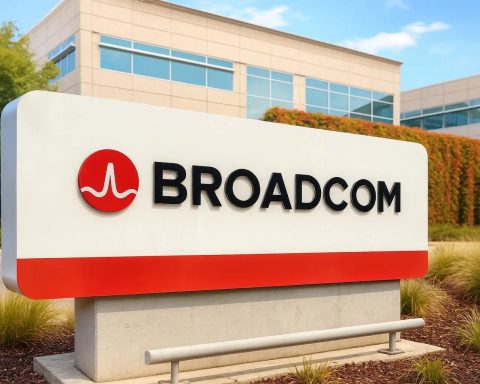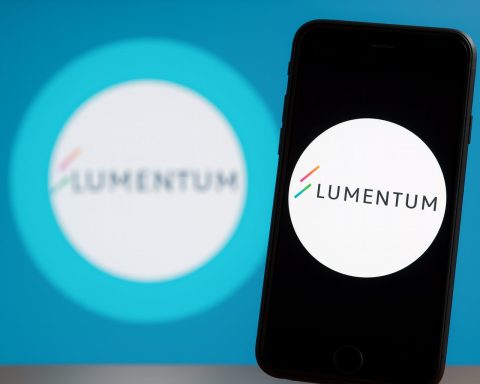Meta Platforms (NASDAQ: META) has become the center of the AI stock story again. On November 25, 2025, the social-media giant is in the headlines for three big reasons: fresh analyst calls, a potential multi‑billion‑dollar chip deal with Google that shakes up Nvidia, and a growing debate over whether Meta’s massive AI spending is a “gift” to long‑term investors or a serious margin risk. [1]
Below is a breakdown of where Meta stock stands today, what the latest research is saying (including the pieces you linked), and how the new Google chip talks could change the AI landscape.
Where Meta Stock Stands After Monday’s Rally
As of Monday’s close (November 24, 2025), Meta stock finished at $613.05, up about 3.16% on the day, continuing a rebound from its recent slide. [2]
Key performance context:
- Well below the highs: Meta hit a 52‑week high of about $796.25 in mid‑August and now trades roughly 23% below that peak. [3]
- Short‑term underperformance: Over the last three months, Meta shares are down about 18.8%, while the Dow Jones Industrial Average is up around 1.9%. [4]
- Longer‑term still ahead: Over the past 52 weeks, Meta is up ~9–10%, edging out the Dow’s roughly 3–4% gain, even after the recent slump. [5]
Monday’s jump wasn’t a random move. A StockStory/Yahoo‑syndicated note, “Meta (META) Stock Trades Up, Here Is Why,” traced the rally to renewed enthusiasm for Alphabet and the broader AI trade, which pushed the Nasdaq higher into the Thanksgiving week and pulled Meta up with it. [6]
What Q3 2025 Told Us About Meta’s Business
Underneath the share‑price volatility, Meta’s core operations remain extremely powerful:
- Revenue: Q3 2025 revenue came in at about $51.2–51.3 billion, up 26% year over year, beating analyst expectations by several percentage points. [7]
- Users: Daily Active People across Meta’s family of apps reached roughly 3.54 billion, up ~7–8% year over year, with the company adding about 250 million daily users over the past year. [8]
- Monetization: Average revenue per user (ARPU) rose to around $14.5, growing more than 17% year over year—evidence that Meta is squeezing more ad dollars out of each user. [9]
- Margins and that ugly EPS print:
- Adjusted EBITDA margin was above 60%, ahead of estimates.
- GAAP EPS looked terrible at $1.05 because of a one‑time $15.9 billion non‑cash tax charge; without that, diluted EPS would have been roughly $7.25, which actually beat expectations. [10]
In other words, the quarter showed strong growth and profitability, but the headline EPS number plus guidance around heavy future AI spending helped trigger the post‑earnings sell‑off.
Seeking Alpha: “This Time Is Very Different – I’m Buying the Gift”
One of the most cited bullish pieces this week is the Seeking Alpha article “Meta Platforms: This Time Is Different, Very Different – I’m Buying The Gift” by Julian Lin, published November 24. [11]
The core arguments of that article:
- Meta as a top pick: The author calls Meta his top market idea, even after the stock’s drop and Wall Street’s anxiety over the company’s aggressive capital‑expenditure plans.
- AI is driving real results already: Meta’s revenue, user growth, and ad performance are being boosted by AI—especially recommendation algorithms and ad‑targeting systems that make its platforms more engaging and more monetizable. [12]
- CapEx now, free cash flow later: Lin argues that coming years of very high AI and data‑center spending could temporarily compress or even wipe out free cash flow, but that this spending is rational and should pay off over time.
- Hidden profitability: He highlights how the Family of Apps (Facebook, Instagram, WhatsApp, Messenger) is enormously profitable and that those profits are being masked by heavy losses at Reality Labs, Meta’s AR/VR and metaverse division. [13]
- Valuation vs. the ‘Magnificent 7’: The article frames Meta as undervalued relative to other mega‑cap tech names, given its margins, balance sheet, and growth profile, and suggests the recent weakness is a “gift” for long‑term investors willing to stomach volatility. [14]
Big picture: this camp believes the market is overreacting to the AI spending cycle and under‑appreciating the quality of Meta’s ad engine and cash generation.
MarketWatch: A New Wall Street Defender Sees 30% Upside
If Seeking Alpha supplied the long‑term bull, MarketWatch delivered a fresh sell‑side endorsement.
A MarketWatch/Dow Jones report titled “Meta’s stock finds a new defender, who predicts 30% upside from here” describes how BNP Paribas analyst Nick Jones just initiated coverage on Meta with an “Outperform” rating and an $800 price target—roughly 30% above current levels. [15]
Key points from Jones’s note:
- Meta is unusual among the big AI spenders: It doesn’t own a full‑blown cloud‑computing platform like Alphabet, Amazon or Microsoft, which made some investors question whether it can justify massive AI investments.
- AI spending as a competitive necessity: Jones’s view is that Meta must spend heavily on AI to stay competitive—and that the long‑term return on this investment should exceed its cost, even if margins take a short‑term hit. [16]
- AI strengths vs. weaknesses:
- Strengths: Meta has used AI to improve user experience, ad tools and engagement across Facebook, Instagram and other apps.
- Weaknesses: Its Meta AI assistant is still behind rivals like ChatGPT and Gemini in adoption and features, and its Llama foundation models tend to score poorly on benchmark leaderboards. [17]
- The real prize is ad monetization: Even while Jones is cautious on Meta’s foundation‑model ambitions, he thinks the company can still capture more global advertising spend as AI improves targeting and pricing. He notes that ad prices are rising even as ad loads increase, a sign of strong advertiser demand. [18]
This call lines up with the broader analyst community: most major aggregators still show “Buy” or “Strong Buy” consensus and mid‑30%+ average upside over the next 12 months. [19]
Cantor, MoffettNathanson and the “This Time Is Different” Bearish Twist
Not everyone is relaxed about Meta’s AI ambitions.
Cantor Fitzgerald: Lower Target, Still Bullish
A piece on Finviz summarizing Insider Monkey coverage notes that Cantor Fitzgerald’s Deepak Mathivanan recently trimmed his price target on Meta from $830 to $720 while maintaining an Overweight rating. [20]
Reasons for the cut include:
- Expectations of higher operating expenses in 2026, driven by infrastructure spending, cloud‑computing costs, depreciation, and AI talent hiring.
- Meta has reportedly signed tens of billions of dollars in long‑term cloud agreements, which could add several billion dollars of incremental annual cost. [21]
Even so, Cantor still categorizes the stock as attractive, just with a somewhat more conservative target.
MoffettNathanson: “This Time Is Different” on Margin Risk
On November 21, a separate Finviz‑hosted note says MoffettNathanson cut its Meta price target to $750 and shifted to a more cautious stance, explicitly warning that “this time is different” compared with past tech spending cycles. [22]
Their concerns:
- Steep margin risks: They believe Meta’s accelerating AI investments and ongoing Reality Labs losses could pressure margins for multiple years. [23]
- Cost discipline: The firm is effectively calling for “another year of efficiency,” arguing that cost discipline has slipped now that the company is leaning into large AI bets.
- Valuation vs. risk: After a roughly 20% drop in the weeks following earnings, MoffettNathanson now feels it was “too complacent” before and that the scale of the spending plans became clear earlier than any revenue slowdown. [24]
Together, the Cantor and Moffett notes capture today’s bear case: AI spending is real and enormous, but the payoff is uncertain in timing and magnitude.
New Catalyst Today: Meta–Google AI Chip Talks Shake Up Nvidia
The newest and arguably most dramatic development on November 25 is a Reuters report that Meta is in advanced talks to spend billions of dollars on Google’s custom AI chips. [25]
According to the report:
- Meta is negotiating to buy Alphabet’s Tensor Processing Units (TPUs) for its data centers starting in 2027, with discussions also covering renting TPUs from Google Cloud as early as next year. [26]
- This would be a strategic shift for Google, which historically limited TPUs to its own data centers, and could position it as a serious rival to Nvidia in data‑center AI chips.
- Internal Google estimates suggest the strategy might eventually capture around 10% of Nvidia’s annual revenue, a slice worth billions of dollars. [27]
- Meta is already one of Nvidia’s biggest customers, with up to $72 billion in AI‑chip spending planned this year, so any switch or diversification toward Google silicon is a big deal for the AI hardware ecosystem. [28]
Market reaction so far:
- Alphabet shares are up over 4% in premarket trading, putting the company on track toward a $4 trillion market cap if gains hold.
- Nvidia shares are down roughly 3% in early trading, with multiple outlets reporting significant potential market‑cap loss as investors digest the idea of Google taking share in AI accelerators. [29]
For Meta, the chip talks underline just how aggressively it’s building out its AI infrastructure—and add a new strategic dimension: not just building models and AI features, but also optimizing its hardware stack and diversifying suppliers.
Is Meta Stock Really Outperforming the Dow?
A Barchart analysis published today asks exactly that: “Is Meta Platforms Stock Outperforming the Dow?” and comes to a nuanced conclusion. [30]
Highlights:
- Over the last three months, Meta has significantly underperformed the Dow, as noted earlier.
- Year‑to‑date, however, Meta is still positive (~4–5% gain), and over the last year it has outpaced the Dow’s total return. [31]
- The same piece reiterates Q3 earnings details and notes that the one‑time tax charge wiped out reported EPS, even though the underlying business delivered strong growth and beat expectations on an adjusted basis.
- Importantly, Barchart cites a Strong Buy consensus from 50+ analysts and an average price target near $830–$840, implying roughly 35–37% upside from current levels. [32]
So while the stock is under pressure in the short term, Wall Street as a whole still sees substantial upside.
How Today’s Bull and Bear Narratives Fit Together
Putting all these threads together, you get two competing—but overlapping—stories about Meta stock today:
The Bullish Narrative
- World‑class ad machine: Meta still operates the largest social and messaging platforms on earth, with billions of daily users and double‑digit ARPU growth. [33]
- AI already paying off: AI is clearly driving better ad performance and engagement, not just theoretical future products.
- Heavy spending with a long‑term payoff: Pro‑Meta analysts (Seeking Alpha, BNP Paribas, many others) see the huge AI and data‑center CapEx as an investment that will compound Meta’s moat, not just a cost problem. [34]
- Valuation support: Even after a big run from 2023 lows, valuation metrics like forward EV/EBITDA and P/E remain below some peers like Alphabet, while consensus price targets suggest 30–40% upside. [35]
The Bearish/Cautious Narrative
- CapEx shock and margin compression: MoffettNathanson and others warn that the scale of Meta’s AI build‑out could keep margins under pressure for years and that investors may be underestimating the cost side of the AI race. [36]
- Reality Labs drag: The metaverse and AR/VR push remain big cash sinks with uncertain payoff.
- AI competition: Meta is playing catch‑up in certain AI areas—especially general‑purpose assistants and foundation models—against OpenAI/Microsoft and Alphabet, even as it spends huge sums. [37]
- Regulatory and legal overhang: While Meta recently won a major FTC antitrust case related to Instagram and WhatsApp, regulators remain focused on the company’s power, data practices and platform harms, which could lead to future constraints or costs. [38]
What Investors May Want to Watch Next (Not Financial Advice)
Without telling you to buy or sell META, here are the key checkpoints that look most important after today’s news:
- AI monetization metrics
- Ad pricing, ad load, and revenue per user will show whether AI is boosting Meta’s ad engine enough to justify the spending.
- CapEx and free‑cash‑flow guidance
- Watch how management talks about 2026–2027 CapEx and whether they outline a path back to stronger free‑cash‑flow generation.
- Chip strategy clarity
- Details on the Google TPU deal—timing, scale, and how it intersects with Nvidia—will matter for both cost structure and flexibility. [39]
- Reality Labs trajectory
- Any signs that AR/VR spending is stabilizing or that the segment is moving toward breakeven would ease some of the bear case.
- Regulatory developments
- Even after the FTC win, new cases or legislative changes around social media, kids’ safety, ads and AI could affect Meta’s outlook. [40]
As always, decisions about META (or any stock) should factor in your own risk tolerance, time horizon, and diversification—not just today’s headlines.
References
1. www.reuters.com, 2. markets.financialcontent.com, 3. markets.financialcontent.com, 4. markets.financialcontent.com, 5. markets.financialcontent.com, 6. stockstory.org, 7. stockstory.org, 8. stockstory.org, 9. stockstory.org, 10. stockstory.org, 11. seekingalpha.com, 12. seekingalpha.com, 13. seekingalpha.com, 14. seekingalpha.com, 15. www.marketwatch.com, 16. www.marketwatch.com, 17. www.marketwatch.com, 18. www.marketwatch.com, 19. stockanalysis.com, 20. finviz.com, 21. finviz.com, 22. finviz.com, 23. finviz.com, 24. finviz.com, 25. www.reuters.com, 26. www.reuters.com, 27. www.reuters.com, 28. www.reuters.com, 29. www.reuters.com, 30. markets.financialcontent.com, 31. markets.financialcontent.com, 32. markets.financialcontent.com, 33. stockstory.org, 34. seekingalpha.com, 35. stockstory.org, 36. finviz.com, 37. www.marketwatch.com, 38. en.wikipedia.org, 39. www.reuters.com, 40. en.wikipedia.org







